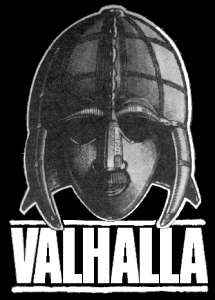| mind games |
New paths explored in Norse adventure
THERE IS a change in direction for adventure games. The path taken so far by authors has been through text-only displays, which left a great deal to the imagination, through graphics adventures which looked like board games and then on to animated games.
The progression was by necessity rather than design. The first adventures were produced on large mainframe computers. The original Adventure, written by Crowther and Woods, occupied most of the memory capacity of one of those giant machines and included more than 200 locations. A micro version of the game is available from CP Software, Syrtis Software and Abersoft.
The reason it was text-only is that 10 years ago computers communicated mostly using teleypewriters or line printers. There was no room for graphics on those relatively primitive machines.
The arrival of the microcomputer and its reliance on fairly inexpensive television sets or visual display units gave adventure authors the opportunity for which they had been waiting. Few people, however, accepted the challenge of adding graphics to adventures.
There was a gap of at least two years before authors began to use the full potential of the machines. Until then users of micros had to tolerate text-only creations, such as the Artic adventures for the ZX-81 and the Spectrum.
The next step was into software which generated still pictures of some of the locations which could be visited during the game. That type included The Hobbit from Melbourne House, the Mysterious Adventures from Digital Fantasia and the illustrated games, such as Magic Mountain and Greedy Gulch from Phipps Associates.
A progression of the technique followed a few months later with the launch of the Carnell Software Black Crystal for the ZX-81 and Spectrum. It is like a board game as it uses several maps of the terrain on which the player moves. In the proper circumstances the player can move into a castle on one of the maps and on to another map showing the castle interior.
Not content with that limited form of moving graphics adventure, some companies decided to go a step further and produce something which was a cross between the Hungry Horace cartoons and the original adventure game concept. The two companies to the fore of this move are Legend and Doric Computer Services.
Doric has produced Oracle's Cave, the Spectrum version of a ZX-81 game which bears some resemblance to the Wumpus-hunt type of adventures which were, at one time, all the rage in the ZX-81 market. It involves your player-character who has decided to explore a cave system in which an evil oracle stands guard over some treasure.
The exceptional aspects of the game include a set time limit of five game-days and the sprite animated graphics which depict your character and the monsters. As you move through the cave system the scenery scrolls up, down or sideways, depending on where you are going.

Valhalla from Legend, which is proving as popular as The Hobbit for many people, also uses animation. It is, however, closer to the original adventure goal of completing certain logical tests or solving some puzzles. Unlike Oracle's Cave, Valhalla also allows you to use English sentence structures to give commands to the characters.
Every scene in the adventure is shown graphically and when you ask a character to perform an action that character will move on the screen.
In many respects the game is more technically-advanced than The Hobbit, although much of the code is written in Basic. The graphics are drawn more quickly than those of The Hobbit and the characters taking part seem to have more independence.
Through a kind of time-sharing system between the gamer and the program it is possible for a player to be entering a command and for the computer to be moving one of the characters across the screen.
The author has used a novel command entry system. If part of the command is not in the command recognition database, or is unintelligible, the computer will mark it in red and not accept the command. It may, however, allow it to be entered and then make no reply to the player or forget about the last command.
The plot of Valhalla, in essence, is like that of Oracle's Cave. There are several quests you have to complete before you can go to the Norse warrior's Hell and live out the rest of your death.
You have to get a series of sacred objects, including a key, a helmet and an axe which will give you certain powers. To do so you have the help and the hindrance of the characters of Norse mythology including Thor, Odin and Loki. During the quest you have to eat and drink to stay alive.
The authors have not been content just to make your characters pick up food or drink on the screen. You can watch them put the bottle or meat to their mouths, mimicking the act of drinking or eating.
Next month I will be looking at Circus, an adventure from Digital Fantasia, and launching into the first part of the Penguin Korth Trilogy, Escape From Arkaron.
HINTS AND TIPSIt is unwise to travel ring roads when you are a novice. You could get lost. It may seem as if there are two sides to every coin. Only one side will help you win and evil is in its way. To gain the first objective you will need to gain a friendship. |